'Things Are Not as Expected': Inside Rome's New Normal
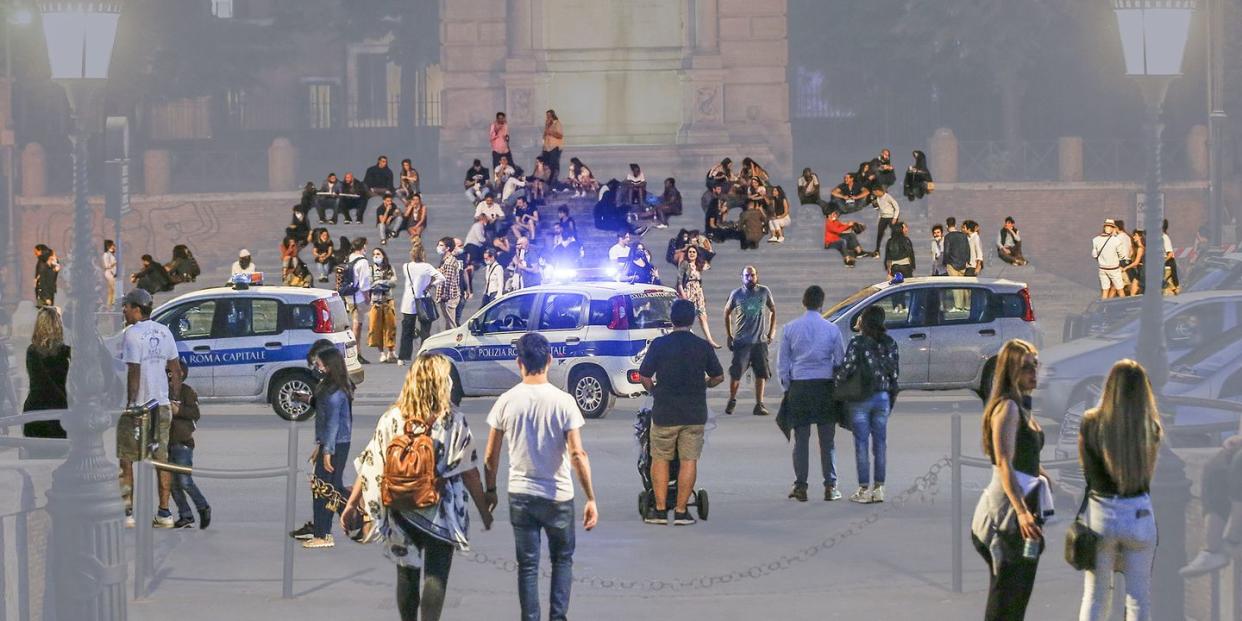
A hush fell as the police cars moved in slowly, circling the crowds gathered in the shadow of one of Rome’s old, great churches, the Basilica di Santa Maria in Trastevere, a rust-colored, colonnaded cube behind which a bell tower sharply rises.
A group of us were enjoying a night in the newly reopened city and the convoy unnerved us. Rome’s police had always set us on edge: In the Before Times they would idle their vehicles in loose configurations around that same square, fining tourists and locals alike for impossibly vague offenses, such as eating sloppily in public, not carrying an “identity card,” drinking out of a glass after 10 pm, drinking out of anything, anywhere.
That was a long time ago. The tourists were now mostly gone and the locals were more anxious than ever, a terrible run of COVID-19 having squeezed the economy and the city dry. And with Rome finally reopening, its police force, emboldened with an array of new, inexplicable powers, had grown ever more disquieting, into a sort of ad-hoc, free-roaming Pandemic Patrol. Down the dark cobbles they would rattle, past crowds of people who didn’t know if they were allowed to gather, enforcing rules that weren’t particularly clear (or forgetting to enforce those that were). For over two months the police had enjoyed free rein over empty streets, and it was into their world Romans were reemerging. Authorities left crowds broken up and parties scattered, a trail of fear and resentment in their wake. There was one bar we used to visit, San Calisto, that closed in a formal protest. “We have no more alibis,” a sign on the shuttered metal grate read. “You must respect the nightlife.”
But on the night they sailed by, a few weeks after the lockdown lifted and “phase two” began, they did respect the nightlife. The cars filed out of the square and disappeared into the black maze of alleys that sprawl westward from the river.
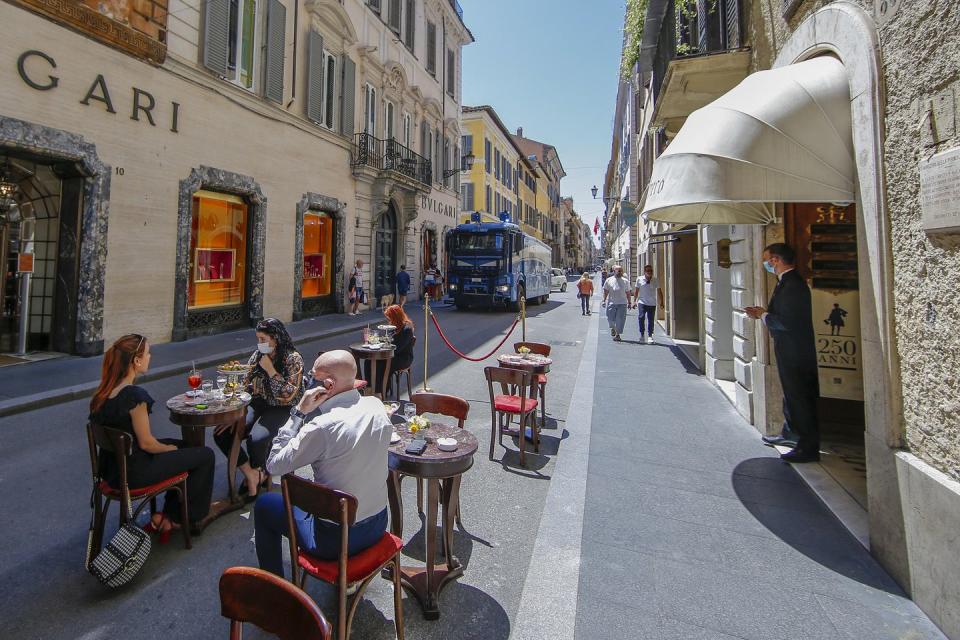
There was a heavy sigh of relief. The night was not ruined.
It’s been a full month now since Rome’s bars reopened, and certainty that a second wave would soon cut the celebrations short has dissolved with surprising ease into long, hot summer nights, impromptu jazz troupes busking in the piazzas, crazed drunks everywhere, even on Mondays. Yet there remains everywhere a pervasive, wrenching sense of anxiety, and Rome is a city split into parallel worlds. Where alcohol isn’t readily available, in the suburbs and along the tacky, Mussolini-era thoroughfares unloved by locals, shopkeepers still plead with their eyes for custom when you so much as peer through their windows, and street peddlers can no longer find a single tourist gullible enough to buy a gimcrack Animatronic Cat-On-A-Stick.
The second wave, so glumly foretold by Italy’s medical community, has not yet appeared. “We were told to wait fifteen to 20 days to see a new peak or slight increase, but we’re not seeing it,” Pietro Brambillasca, an anesthesiologist in Lombardy, Italy’s worst hit region, tells me. “We are learning something different again. Things are not going as expected.”
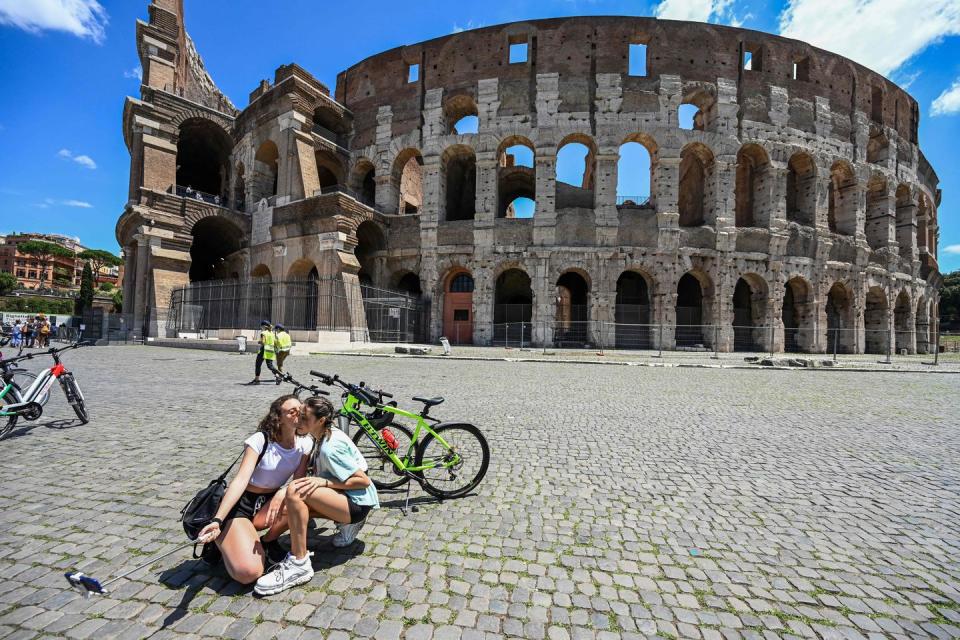
Nothing is as expected. Although the streets feel more alive, half the people you speak to say they have scarcely gone out. Take, for instance, Lucrezia Oddone, an Italian teacher who has left her apartment only a handful of times since the lockdown first lifted. Going out, for her, has been too depressing. “Shops reopen, and it’s not the same,” she says. “Maybe the owner changed, or they’re not selling the same thing. You’re at home for three months and when you go out, you don’t recognize your city anymore.”
While there is beauty to be found in the reopened city—in parks left untended, the grass has grown long and wild, and the landmarks are no longer congested with tourists—there is now a strangeness to everyday life. Bars serve drinks over tables wedged inside doorways, cashiers hide behind Perspex shields, and restaurants have become like hospitals, requiring customers to fill out long forms and disinfect themselves before entry.
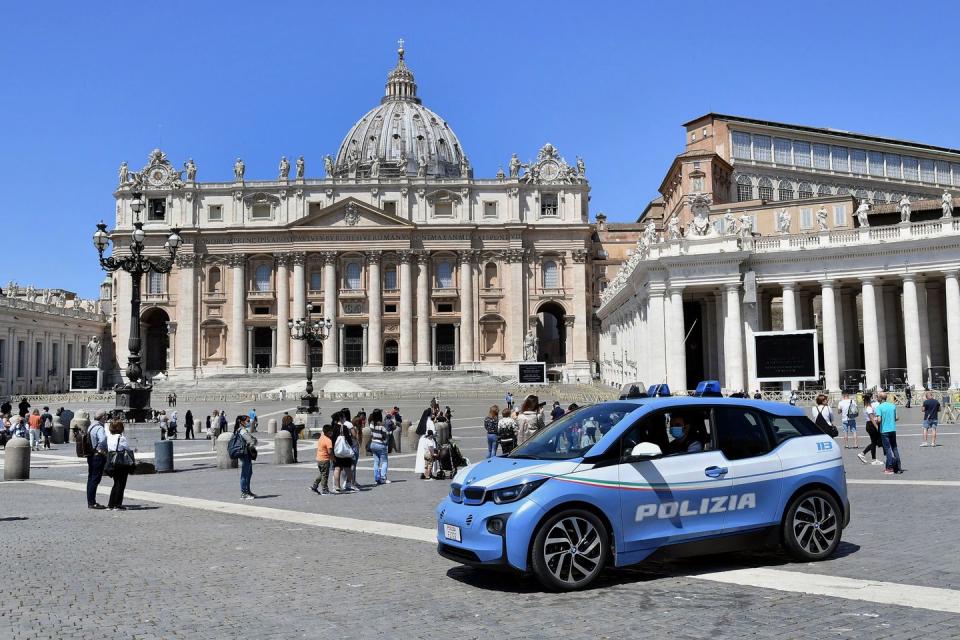
It doesn’t help that many of these changes make little sense. Oddone visited a hair salon when the lockdown ended, and the hairdresser asked customers for a written affirmation that they didn’t have the virus. Had they been tested? Most of them had not. A waitress at a bar the other day demanded two friends and I fill out a form proving we were flatmates—a requirement the government abandoned weeks ago—and then promptly forgot to procure it.
When I spoke to her some weeks ago, Oddone told me that she had mustered the courage only to visit her parents since the lockdown ended. She treated their apartment like a CSI crime scene. She wore a mask, as most Romans do now. Before even entering, she said, she took off her shoes, used hand sanitizer, then ran to the bathroom and used hand sanitizer again. The reunion wasn’t the usual Italian interpersonal scrum. “We didn’t hug, we didn’t kiss, we just waved at each other,” she said.
So who, exactly, is going out? It became clear a couple weeks ago when I went to a newly reopened Heavy Metal bar just at the foot of the Janiculum hill, an enormous wooded ridge that scales Rome’s west side. “We’re going to need to see your documenti,” the bartender said. He laid out two chairs for us and placed himself opposite, under a flickering bulb, like an interrogator. The documenti, he explained, would provide identifying details for contact tracing purposes, in the event the bar became the site of some sort of super-spreader event.
Except there was no way a super-spreader event wouldn’t have occurred in that place if there was even a whiff of COVID in the air that night. The bar was crammed with teenagers, around 50 of them, fresh from a Thursday of Zoom-schooling, ordering rounds of six, seven shots, and smoking and laughing uproariously. Indeed, peer under the patina of Rome’s resumed normality and that’s what you’ll discover: The city is overrun with school kids, roving around in huge groups, drunk off of booze they’re legally allowed to buy—the drinking age here is nominally 16, but newborns in this country are weaned on Montepulciano—and singing along to pop anthems blasted from portable speakers.
“They’re the only ones who don’t care about the risks,” announced a friend.
Sitting with me at a bar some weeks ago, another friend, sucking on a Peroni, mourned this predicament. “I’d expected the reopening to be like V-Day,” he said. “People filling the streets, dancing, making out in public.”
Instead, it’s just damned kids—and police—everywhere.
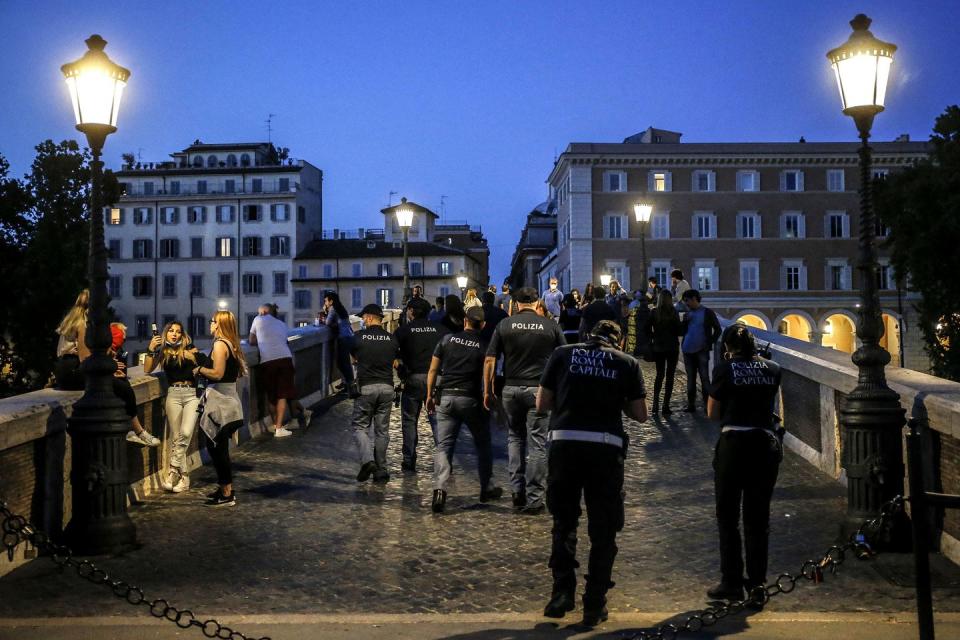
Maybe that’s just Rome. Friends in other Italian cities tell me things are resolutely, worryingly, business as usual. When the rules first lifted somewhat, “everything went straight to normal,” says Clare Speak, a journalist who lives in Bari, a seaside city on the heel of the Italian boot. Locals packed the seafront in high heat, traffic jammed up the city center, and the mayor uploaded videos of himself shopping. And since the bars reopened, it’s been “non-stop partying, a lot more than what you’d normally see.” Are people wearing masks? Only as a “token gesture, on the chin or forehead, or ear,” she says.
The same goes for Siena, a fortified city of roughly 50,000 in the Tuscan countryside. A student in the city, Bora Avsar, tells me that hundreds of residents have recently emerged to mill around the piazzas and the historic cathedral. There’s a poetry to it: The cathedral, a towering, 700-year-old colossus of bronze and marble known locally as “Il Duomo,” is itself the victim of a plague. After a bout of Black Death killed most of the city’s population in 1348, the church was left incomplete, and hollowed out entirely at one side of its black-and-white facade. At least this time, there are still Sienese left to come out and mingle beneath the Duomo’s half-built roof—and outside of the zero-to-eighteen age bracket, no less.
The first instance of a mass gathering in Rome that wasn’t mostly children occurred on June 7. People of all ages converged on the Piazza del Popolo, an enormous square once reserved for public executions, in a show of solidarity with the Black Lives Matter protests in the United States. Sandwiched between the two cathedrals which frame the square, thousands of Romans stood for several hours, chanting and holding up placards. While much of the rally’s revolutionary branding was lifted wholesale from the American original —its slogans were preserved mostly in English (“defund-a the police”), and its aims weren’t really aligned with anything particular to racial inequality in Italy—it was on the whole a more modest affair. There was no violence and the rally dissipated by early afternoon. Protesters, all of them masked, kept a wary distance from each other. Lines of police vans flanked the square, but never moved in to break up the crowd.
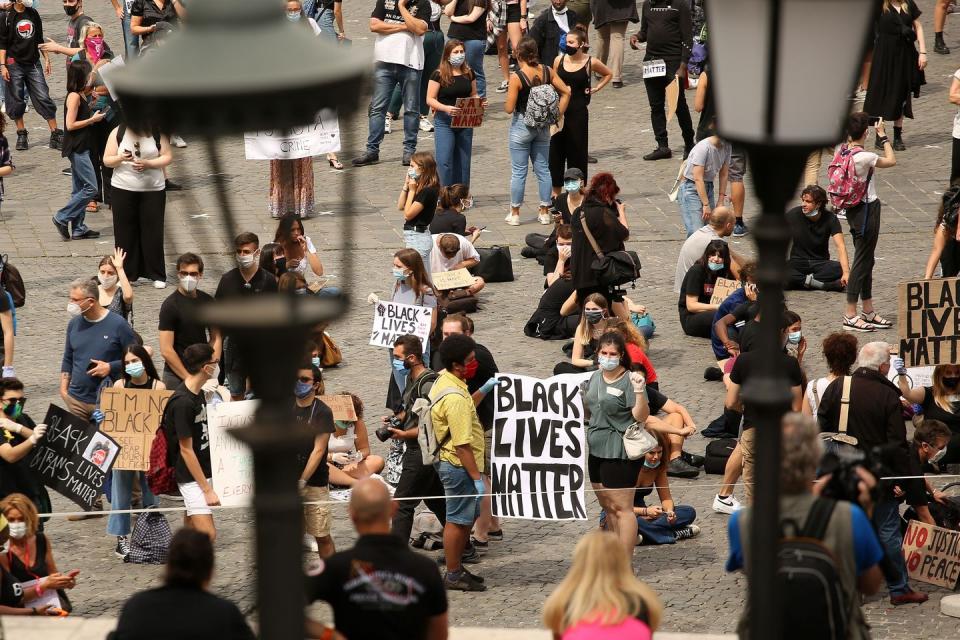
That the police didn’t so much as harass a single person in the 3,000 strong gathering was baffling, to say the least. And although Rome’s finest continue to waft through the streets, enforcing social distancing between small groups, the party has, irrepressibly, gone on. Forced from bars, revelers took up residence on steps and in large piazzas. When many of those spaces were subsequently cordoned off, they moved elsewhere, into dark nooks, narrow side-streets, every slab of available ground they could find. The papers complain that the piazzas have turned into “open air discotheques,” but, short of another lockdown, there’s not much that can be done. Many of the officers just stand there, watching, casting a pall of unease but doing very little.
It seems they have returned to pursue their real passions. Recently, as I sat in the shadow of the Basilica di Santa Maria in Trastevere, a pair of officers strolled up to me. Had I sneezed unduly? Was I inappropriately distanced? Ah, no. It was just a standard identity card check-up: horribly inconvenient, pointless and annoying, just like the good old days.
You Might Also Like

